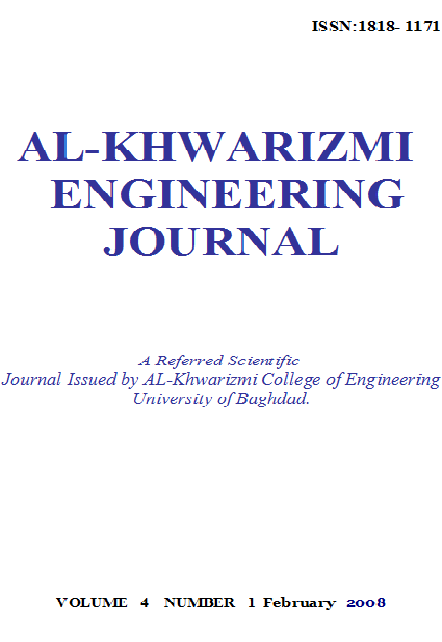Minimizing error in robot arm based on design optimization for high stiffness to weight ratio
Abstract
In this work the effect of choosing tri-circular tube section had been addressed to minimize the end effector’s error, a comparison had been made between the tri-tube section and the traditional square cross section for a robot arm, the study shows that for the same weight of square section and tri-tube section the error may be reduced by about 33%.
A program had been built up by the use of MathCAD software to calculate the minimum weight of a square section robot arm that could with stand a given pay load and gives a minimum deflection. The second part of the program makes an optimization process for the dimension of the cross section and gives the dimensions of the tri-circular tube cross section that have the same weight of the corresponding square section but with less deflection.
Downloads
References
[2]. Marcus P., Peter K., Xiaolong F.A., Johan A. and doniel W. “industrial robot design optimization in the conceptual design phase”, IEEE –mec. Of robot, 2004.
[3]. Abdel –Malek K. and Paul B., “criteria for the design of manipulator arms for high stiffness to weight ratio”, SME journal of manufacturing systems, Vol.17, No.3, pp.209-220.
[4]. E.I. Rivin, mechanical design of robots, 1988, Mc Grow –Hill, Inc, New York.
[5]. E.j. Hearn “Mechanics of materials”, Pergamon press, 1977.
Downloads
Published
Issue
Section
License
Copyright: Open Access authors retain the copyrights of their papers, and all open access articles are distributed under the terms of the Creative Commons Attribution License, which permits unrestricted use, distribution, and reproduction in any medium, provided that the original work is properly cited. The use of general descriptive names, trade names, trademarks, and so forth in this publication, even if not specifically identified, does not imply that these names are not protected by the relevant laws and regulations. While the advice and information in this journal are believed to be true and accurate on the date of its going to press, neither the authors, the editors, nor the publisher can accept any legal responsibility for any errors or omissions that may be made. The publisher makes no warranty, express or implied, with respect to the material contained herein.












